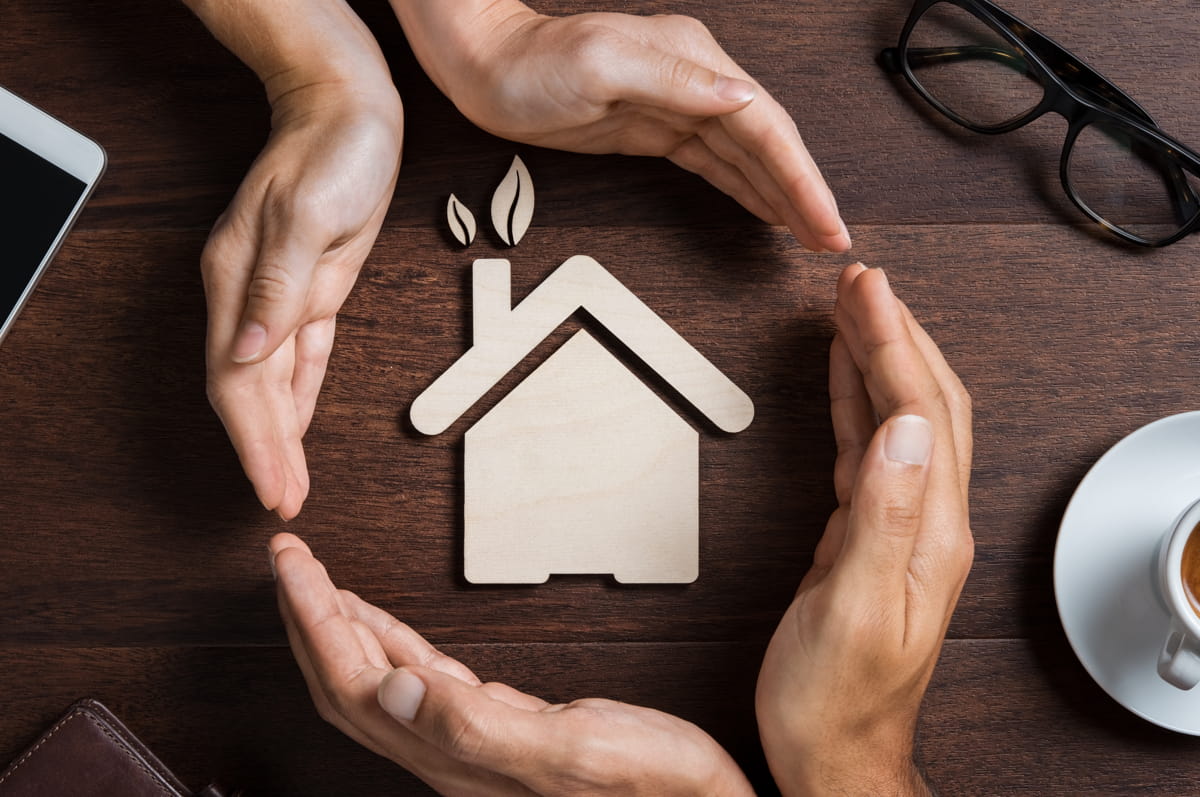Many low-income families are most affected by the severe lack of affordable housing across the country.
The problem is that the issue is a cycle, one made worse by poorly designed, uninsulated houses with aging plumbing systems.
It has long been established that your environment affects your health and wellbeing. This stresses the importance of comfortable, healthy, and affordable housing, something increasingly out of reach for ordinary citizens.
Low-income renters are among those that were hit the most, with their income unable to keep up with the continuously increasing housing prices.
Reports show that more than half of low-income renters in the U.S. spend most of their income to pay their rent.
However, rent is not the only cost these residents have to deal with, as they also need to pay for their higher energy bills. Between the rent and energy costs, these low-income residents barely scrape by just to pay for their bills and other necessities.
The current situation makes it crucial for developers to focus on creating affordable housing with a design that helps lower energy costs.
One identified method to make housing more affordable, comfortable and energy-efficient is sustainability. With sustainable features, there is an excellent potential to tackle both housing and climate crises.
Sustainability Create Affordable Homes
Affordable housing brings numerous benefits. It will strengthen communities, generate jobs, and decrease carbon emissions.
For houses to become affordable, though, they must be designed and built with sustainable features. Sustainable homes are energy-efficient and high-performing. They consume less energy, thus cutting costs.
Many do not believe that affordability and sustainability complement each other. However, homeowners of sustainable houses indeed spend less on utility and operational bills.
As a result, a bigger portion of their incomes can be allotted for other necessities. Moreover, the costs they save can be used to improve the houses’ durability and longevity.
The benefits of a sustainable house are long-term, backed by extensive evidence. It is true that the up-front costs of the construction are a bit expensive.
Building sustainable homes mean the use of superior equipment and tools. Moreover, professional architects and engineers build sustainable homes, adding to the high cost.
However, the long-term cost efficiency of green homes is worth it. Sustainable homes consume less energy, allowing you to manage your expenses better.
Additionally, if built by an experienced team, a high-performance residence can have lower ongoing costs. Many low-income households can better afford rent with reduced utilities and ongoing expenses.
Affordable households are the most significant positive impact of sustainable housing. Not only do green housing help reduce construction costs, but it also protects the environment.
Utilizing sustainability in design and construction extends beyond reducing energy costs. By using a low amount of electricity, your emissions and carbon footprint are also reduced.
In addition to reduced electricity consumption, green housing also decreases water consumption. This also cuts energy costs and will be extremely helpful in areas suffering from drought.
With climate change being an increasing problem, energy efficiency and water efficiency are both essential in the future when resources will likely be scarce.
Sustainable Homes Promote Affordable and Clean Energy
Based on the established relationship between sustainability and affordability, one of the essential benefits of sustainable design is access to clean energy. Green homes are designed to use renewable energy such as solar power, which is cheaper than fossil fuel.
Clearly, solar power is a much cheaper option than kerosene or diesel. Besides the cost of the solar system itself and the installation, it is clean and virtually free.
As mentioned, sustainable homes also have the benefit of no carbon emissions with the use of renewable energy. With a sustainable design, you have low-cost housing while doing your part in saving the planet.
Sustainable Houses Improve Comfort and Health
The benefits of sustainable homes extend to comfort and health. In most people’s eyes, buildings are nothing but inanimate structures.
However, the building itself can offer a solution to some of the most pressing issues the world is facing. One of which is good health and wellbeing, where people of all ages lead healthy lives.
A lot of evidence suggests that the design of a house or building impacts your health. For instance, you may develop lung and respiratory diseases if your home has poor indoor air quality.
This is where sustainability plays a vital role because it can improve ventilation, lighting, and the outdoor environment, improving your wellbeing.
Sustainability can create buildings that not only help low-income renters save money and better manage their spending. It also does not only help the improvement.
More importantly, building a sustainable home means you can have a happier, healthier, and more productive life. This is all thanks to sustainable homes’ better design and energy efficiency.
Sustainable Design Will Eventually Become Cost-Effective
One of the biggest issues people have when it comes to implementing sustainability in building homes is the initial cost. Here is the deal – the construction costs of a green building are constantly evolving.
It is not the same with energy sustainable property since various factors affect the price. Two of those factors have to do with the building products and the contractors.
Unlike ordinary buildings, there are not enough high-performance building products used in sustainable design. Moreover, there is no competition for these products.
These two drive the prices for the available products through the roof. Therefore, building a sustainable home naturally costs higher.
Another factor affecting the cost is related to the premium paid to the contractors. Sustainable design is specialized, and not many are familiar with it. Many contractors have difficulty estimating its cost.
This is because they also need to consider their effort to do something they have no experience of and is out of their expertise.
The only way for the costs of building a sustainable home to become more affordable is by creating more and more of them. Every year, more people see the benefit of green buildings, so more of them are built.
As a result, there’s a demand and competition for building sustainable products, and contractors will gain experience.
How People Can Build Sustainably
The concept of sustainability has gone a long way since it was first introduced. There were design mistakes before, which was not considering some of the needs of homeowners.
For one, homeowners can lead a quality life if they are in an environment where transportation is easy and have plenty of commerce options.
For this reason, more modern designs for affordable housing now include energy efficiency and healthy environments.
In building an affordable home that effectively drives down the living and operating costs, its location is one of the many factors to be considered. To be precise, it must be close to schools, shops, public transportation, and others.
You can also take better advantage of the benefits of a sustainable home by building it a town center or city with existing infrastructures. In addition, it would be best to have outdoor spaces and units that have a passive design. This can do better in reducing the consumption of energy more naturally.
You can also build sustainably by using durable hardware, fixtures and equipment. Additionally, use durable paints and finishes. More importantly, choose products that are easy to repair. Another technique is the use of Energy Star and LEED checklists that can help reduce your energy consumption.
All the techniques stated above, particularly the durable materials, help you meet your environmental needs. They can help take advantage of all the benefits of a sustainable home and ensure you can maintain your residence easily. When all of them are brought together, there is no doubt that a happy, strengthened community is no longer just a faraway dream.
The Growing Trend of Sustainability
Today, sustainable housing has become a national movement, and it should be so. The benefits of adopting sustainability in building homes can make several of the U.S. governments’ many goals come true.
Quite apparently, it is one of the solutions the government can adopt to deal with the increasing housing crisis.
With it, more people who are plagued with rents can finally pay for housing without sacrificing their other needs. Of course, sustainable homes provide cleaner energy, which leads to energy bills and lower operational costs.
Meanwhile, better design improves ventilation, and as a result, occupants of sustainable homes are healthier, happier, and more comfortable.
Other indirect sustainability benefits include more work, increased economic growth, resilient infrastructure, innovation, inclusive, resilient, and safe cities, and more.
Most importantly, affordable housing or sustainable housing benefits not only low-income residents. It helps anyone who wants to cut down their energy costs and help the environment.
Different groups of people can benefit from sustainability. As such, it would be an excellent idea for countries worldwide to focus more efforts on creating green buildings.
Surely, the future will be better with homes and communities that sustain themselves and help the environment. It will be a beautiful and happier future for the next generation.
Sources:
https://www.multihousingnews.com/why-sustainability-is-pivotal-to-affordable-housing/
Sustainability and Energy Efficiency – Key to Affordable Housing | EcoMENA
The Case for Sustainability in Affordable Housing – SCHFH (schabitat.org)


